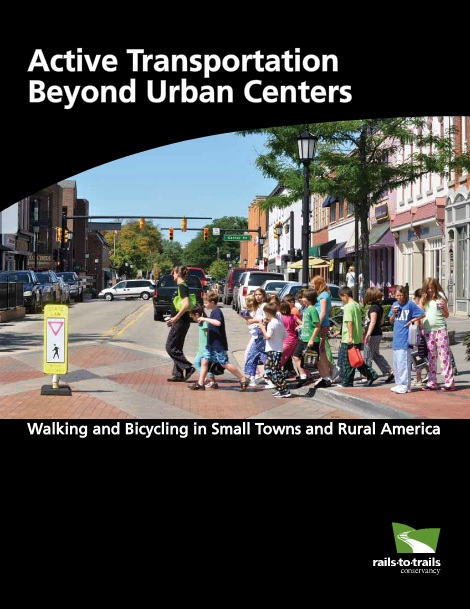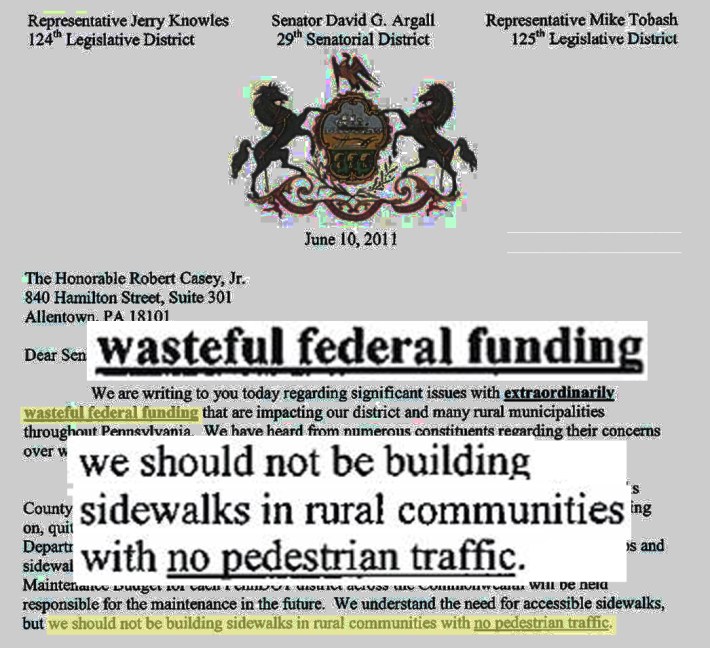One reason why Congress may be so willing to eliminate dedicated funding for bicycle and pedestrian programs is the persistent notion that biking and walking are limited to cities, and therefore of no concern to rural legislators. Setting aside for a moment the arguments supporting a federal interest in urban transportation, the notion that nobody bikes or walks in rural areas is outright false, as amply demonstrated in a new report from the Rails-to-Trails Conservancy.

Yes, it may be true that "rural biking and walking rates are lower than national biking and walking rates," said report contributor Tracy Hadden Loh, "but it's not that much lower -- and it's not zero."
The report, "Active Transportation Beyond Urban Centers," shows that in large and small "rural cores" of 2,500 to 50,000 residents, the share of total trips made on foot or by bike is only 20 percent below the rate for larger urban cores. Furthermore, when it comes to work trips, rural areas fall right in line with the national rates of biking and walking to work.
Other surveys highlighted by the report show that rural residents rank pedestrian friendliness as being more important than major roads or long-distance transportation.
Rural communities do not often have the resources to amass and analyze data like the kind in RTC's report, Hadden Loh explained. They may think biking and walking is a coastal, urban, New York/San Francisco thing, "but they don't understand how much they have already."

The misconception endures, said Hadden Loh, because of unfamiliarity. Although 80 percent of the nation's counties are designated "rural" by U.S. DOT, they account for only 20 percent of the nation's population. The result is a lack of awareness, not only on the part of policymakers unfamiliar with their own constituencies, but on the part of rural communities themselves who buy into the myth as well. "Some of the politicians most opposed to [bike/ped] programs represent the communities who benefit the most from programs like Transportation Enhancements," said Kevin Mills, RTC's Vice President of Policy.
Besides compiling numerical data on rural transportation, the report also includes testimonials from rural communities across the country, demonstrating the benefits of bicycle and pedestrian infrastructure.
Obviously, there are more stories out there than could possibly fit in the report, but RTC has launched an interactive mapping website that displays additional stories as well as illustrates the data in the report. There's also an opportunity for users to submit their own stories.
And the stories are not just for the benefit of policymakers in need of an education, Hadden Loh said. "There are other people like you doing your bike/ped work in other rural areas. We want to help those rural areas connect with each other."





